Furniture Row’s Sofa Buying Guide
Sofas and Sectionals 101: Important Features to Understand Before Shopping
Buying a sofa or sectional isn’t for the faint of heart - it’s a significant financial investment that impacts your comfort and your home for many years to come. To complicate things, today’s sofas and sectionals also come in a huge variety of shapes and sizes, and with a myriad of features to consider!
If you’re not an expert or just new to the furniture shopping process, it can definitely seem overwhelming. To make things easier, we’ve created this guide to help you know which basic features to look for in a new sofa or sectional so you make a smart purchase.
Isn’t a Sectional a type of Sofa Anyway, What’s the Difference?
Sofas
Sofa is a term people use to refer to a wide variety of living room seating products, including standard sofas, sectionals, loveseats, and futons. Standard sofas are long upholstered seats with three sets of cushions to sit three people, and they traditionally feature backs and arms for added support.
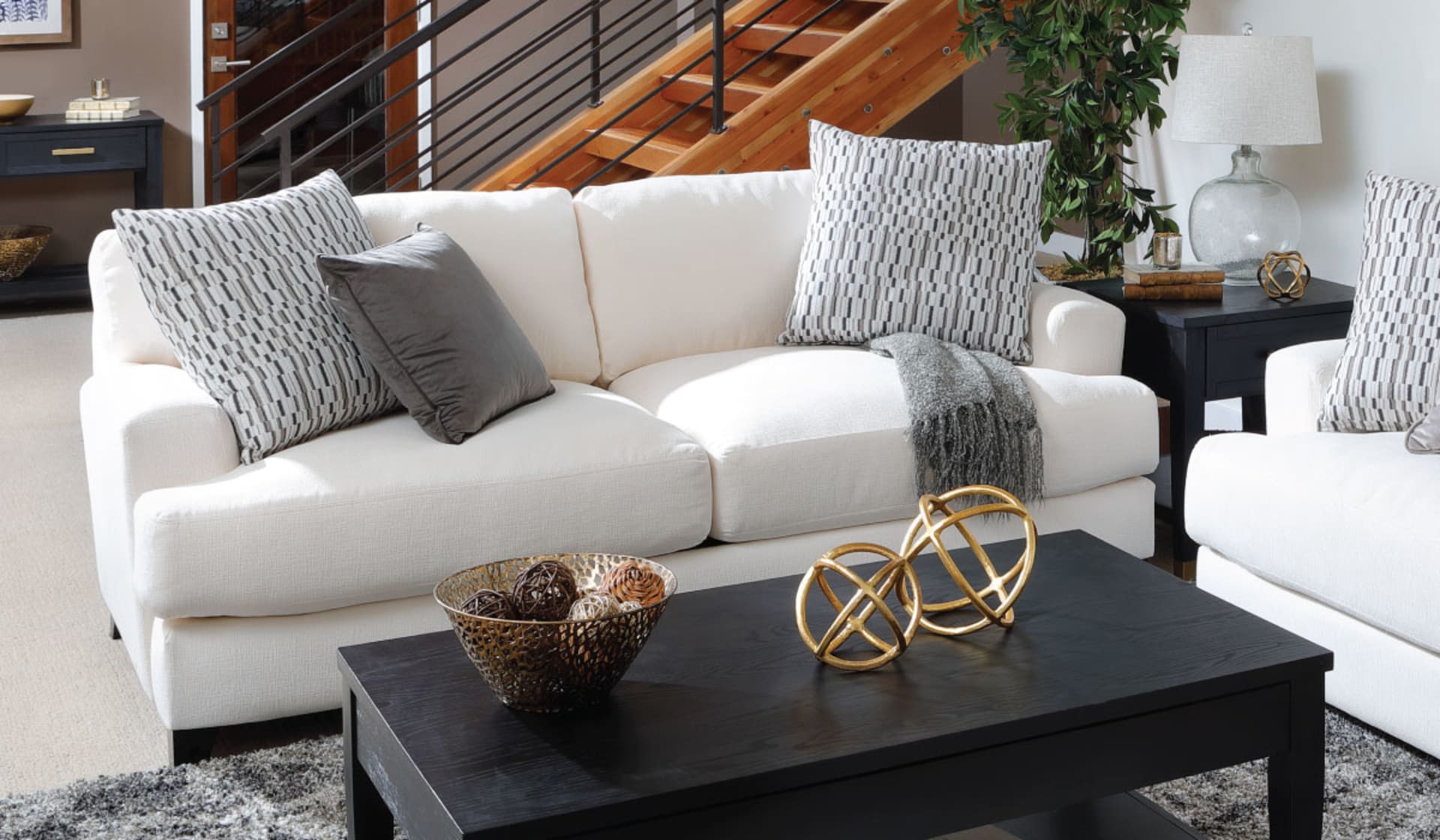
Benefits of Sofas
- Versatile Size - Standard sofas are sized perfectly so that they work great in both large living rooms and small living rooms!
- Classic Design - Sofas have been the go-to living room item for centuries, so they instantly instill a well-put-together look in any space.
- Range of Prices - Sofas come in a wide variety of prices, from extremely affordable to impressively expensive depending on features and design elements.
Sectionals
A sectional is a large sofa composed of separate sections designed to combine together, usually in L-shaped or U-shaped configurations. Because they are made in sections, some sectional components are called either right-arm facing or left-arm facing so you can tell which side their attached arm is on when facing the seating area.
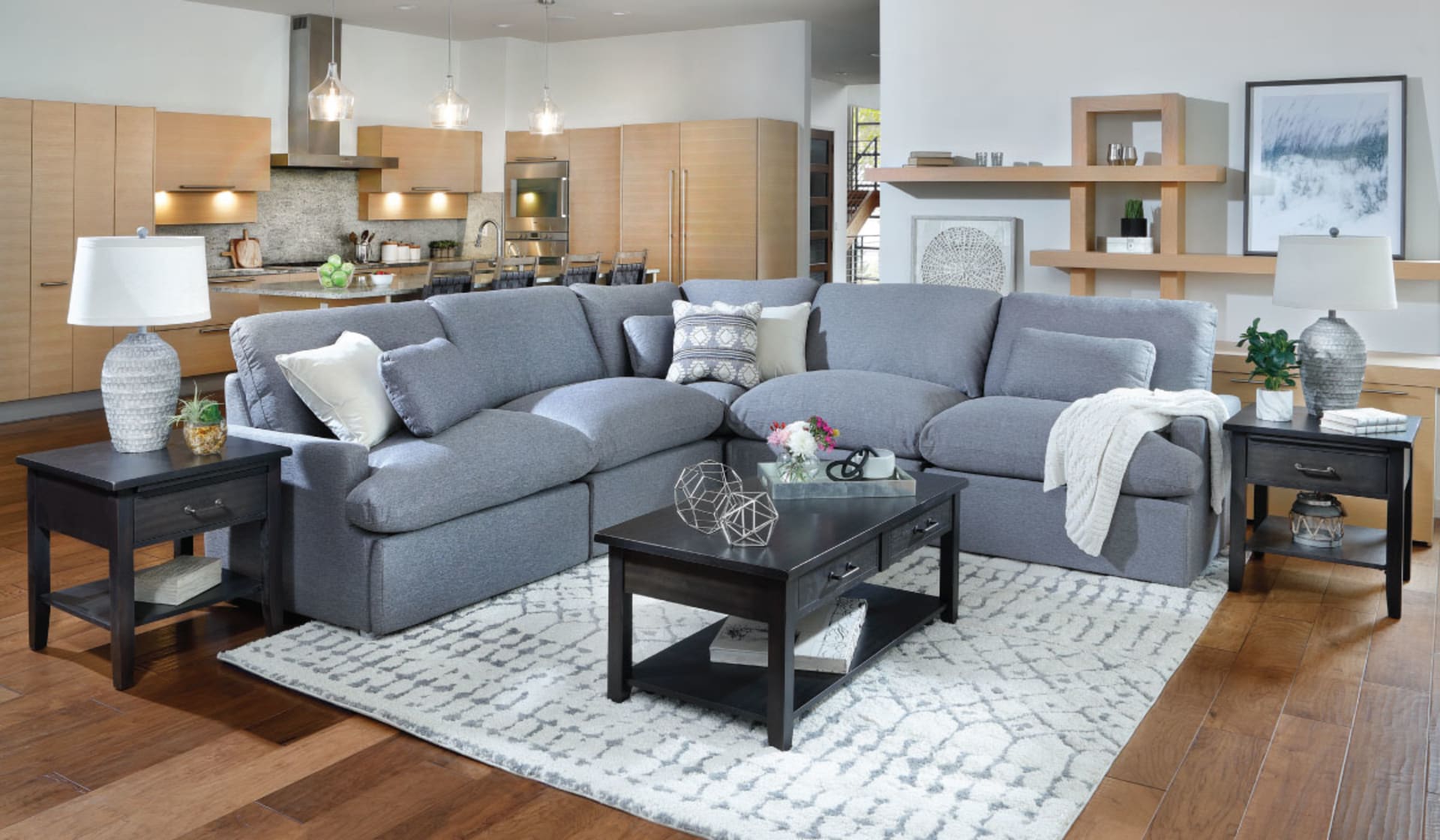
Benefits of Sectionals
- Great for Large Homes - Sectionals are usually larger in size which makes them great for large families and anyone with a spacious living room.
- Comfort in Unique Spaces - Sectionals have an angled shape, which makes them ideal for filling out corners and oddly shaped rooms.
- Storage Features - Today’s sectionals usually feature one or more convenient storage compartments for blankets, remotes, and other living room necessities.
What Do You Really Need in a Sofa?
To stop the furniture shopping process from becoming overwhelming, it’s a smart idea to figure out what you need from your new sofa or sectional before you start scrolling through endless product pages.
To Recline or Not to Recline?
And, one of the first things people ask themselves is whether or not they want a stationary sofa or sectional, or if they want to look for something that can recline.
*A reclining sofa or sectional is one that features either a power or manually-operated reclining system which allows select seats to recline backwards for maximum comfort.
Benefits of Reclining Sofas and Sectionals
- Unparalleled Comfort - A reclining sofa or reclining sectional offers unparalleled comfort - plus only one person can lay down on a regular sofa, but a reclining sofa allows for two or more to lay back with ease!
- Instant Lounge Feel - Sofas and sectionals that can recline instill a lounge-ready atmosphere to your space, perfect for movie nights with family and friends.
- Great for Chronic Pain - Reclining sofas and sectionals can be amazing for people with chronic back pain, especially if it features a Power Lift* or Zero Gravity* mechanism.
* Power Lift Chair - A power lift chair features an internal lifting mechanism that elevates the user to a standing position at the touch of a button. Lift chairs are great for people who have difficulty standing from a seated position.

Pictured above: Pharoah Power Lift Recliner
* Zero Gravity Recliner - When you recline in a traditional recliner, your body weight tends to be shifted to your lower back. A Zero Gravity recliner reclines further back so that your feet come above the height of the seat and your body weight is evenly distributed.

Pictured above: 1. Pharoah Power Lift Recliner | 2. Shavasana Massage Recliner | 3. Voyager Leather Power Reclining Loveseat
Questions to Ask:
Other than reclining features, there are a lot of other factors about your needs, your lifestyle, and your home that come into play when buying a sofa.
Do you need a small, affordable sofa for your first apartment, or do you need a large sectional that will serve as the anchor piece in your family home for years? Do you want a stylish seat that is sure to elevate your home’s interior aesthetic, or do you want something full of all the latest comfort features to relax and unwind?
- If you need something that’s large and built to last, you’ll probably want to shop for a sectional that offers a few premium construction features.
- If you just need something small and stylish for your first apartment, then you may not be ready to invest in top quality construction features - and that’s ok too!
Get the Right Size for Your Space!
As you consider your needs, you should also make sure your new sofa or sectional will meet the needs of your space. The last thing you want to do is take home something that’s simply too big or too small for your living room.
The general rule in the interior design world is that the length of your sofa should be about two-thirds the length of the room it inhabits. To figure this out, take the length of your living room in inches and multiply it by 0.66 to get the ideal length of any new sofa or sectional!
*(For more information on how to arrange your living room, be sure to check out our Living Room Layout Guide!)
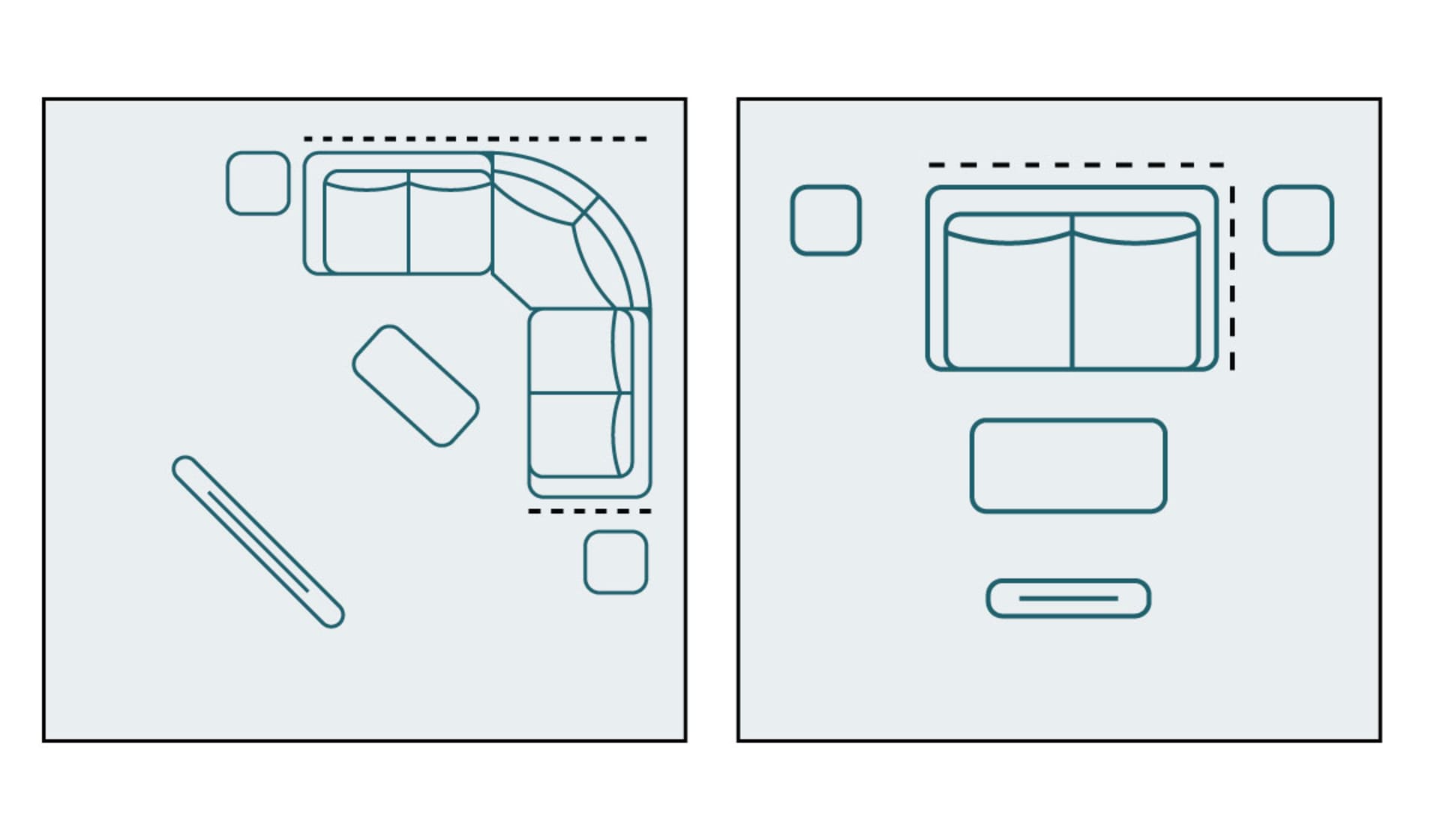
- If you have a small or medium sized living room and need straight-lined seating that can be placed either along a wall or towards the center of the room, then you’ll probably want to opt for a standard sofa.
- If you have a larger space or need to fill out a corner of your living room, then you may want to look at either a 2-piece sectional, a 4-piece sectional, or even something like a 6-piece modular sectional*, depending on the size of your home.
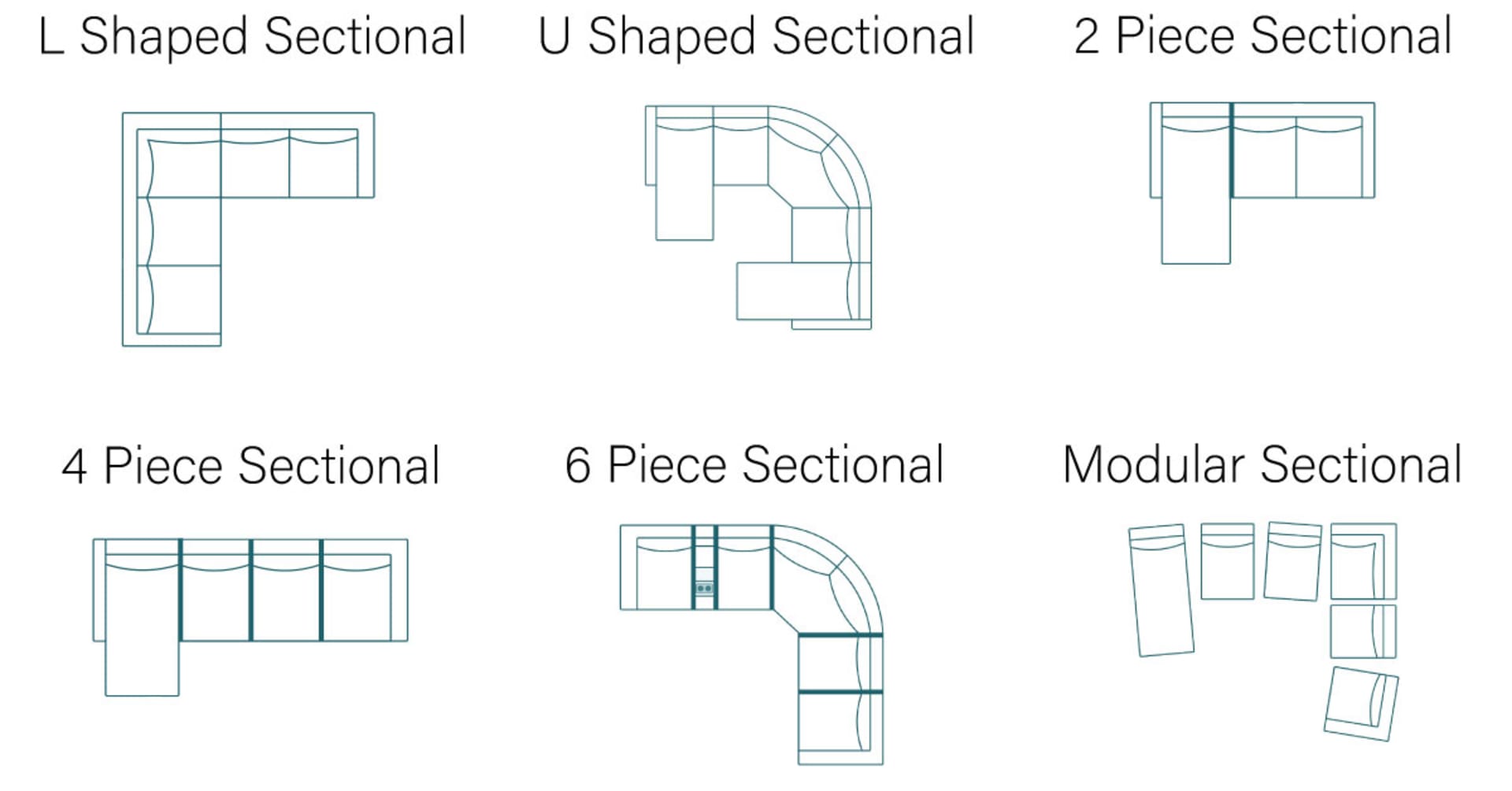
*What’s a modular sectional?
- A modular sectional is different from a traditional sectional because the sections in a modular sectional can be pieced together in any configuration to suit any room shape, whereas traditional sectionals can only come together in 1 or 2 predetermined configurations.
How Well It's Made = How Much You Paid!
Regardless of size and added features, sofas and sectionals are made similarly. Understanding the basics about how frames and internal support systems are constructed is an easy way to see if you’re spending your money wisely.
The Frame
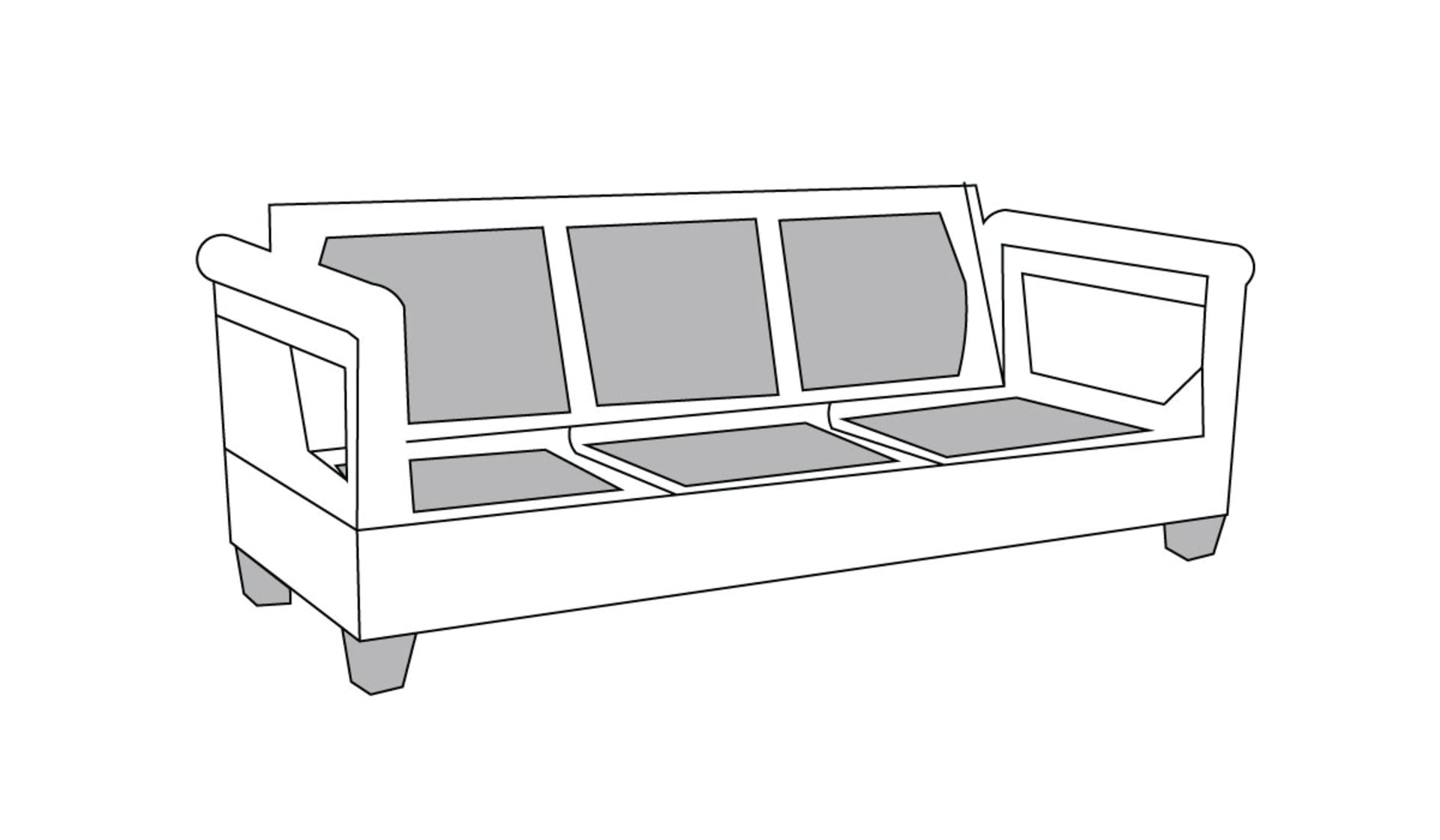
The frames of large upholstered furnishings like sofas and sectionals are usually made from wood. But when it comes to support and lifespan, not all woods are created equally. The two main types of wood you’re likely to see when sofa shopping are engineered wood and hardwood.
- Engineered Wood - Engineered wood is a general term for types of man-made wood like MDF and plywood which are created by binding scrap wood, shredded fibers and even sawdust together with strong adhesive. There are many types of engineered wood, the most common varieties in furniture being MDF and plywood.
- MDF is a versatile and affordable type of engineered wood made by combining hardwood and softwood pieces into fibers, which are combined with wax and resin binders, and formed into panels by applying high temperatures and pressures.
- Plywood is a surprisingly hearty type of engineered wood which is created by gluing and pressing thin layers of wood together at 90-degree angles so that their grain runs perpendicular to one another for exceptional strength.
- Hardwood - Hardwood is a hearty type of wood that comes from broad-leafed trees. Because it is so strong, hardwood is considered the highest quality material when it comes to sofa frame construction, but it is also the most expensive.
- Solid Hardwood - If a piece of furniture is made from “solid hardwood”, it means that it is made using only solid pieces of hardwood and no veneers for exceptional durability. Veneers make things look beautiful, but pieces made with veneers aren’t as durable as solid hardwood pieces.
Internal Support Systems
The internal support system is another thing to consider when understanding the quality and value of a new sofa or sectional. Like with the frame, there are multiple varieties of support systems to be aware of when shopping for a sofa. The most common types of internal support systems are coils, elastic webbing, sinuous springs, and metal band bases.
- Coils - just like with mattresses some sofas feature coils as means of support between the frame and seat cushions. Coils are considered a traditional support feature compared to other techniques, and they add to overall resiliency and comfort over time.

- Elastic Webbing - Elastic webbing is a support system for upholstered furniture made from thick synthetic and nylon-blended strips which are interwoven to create a strong yet flexible foundation. Elastic webbing is a relatively modern construction material that's affordable and resilient.
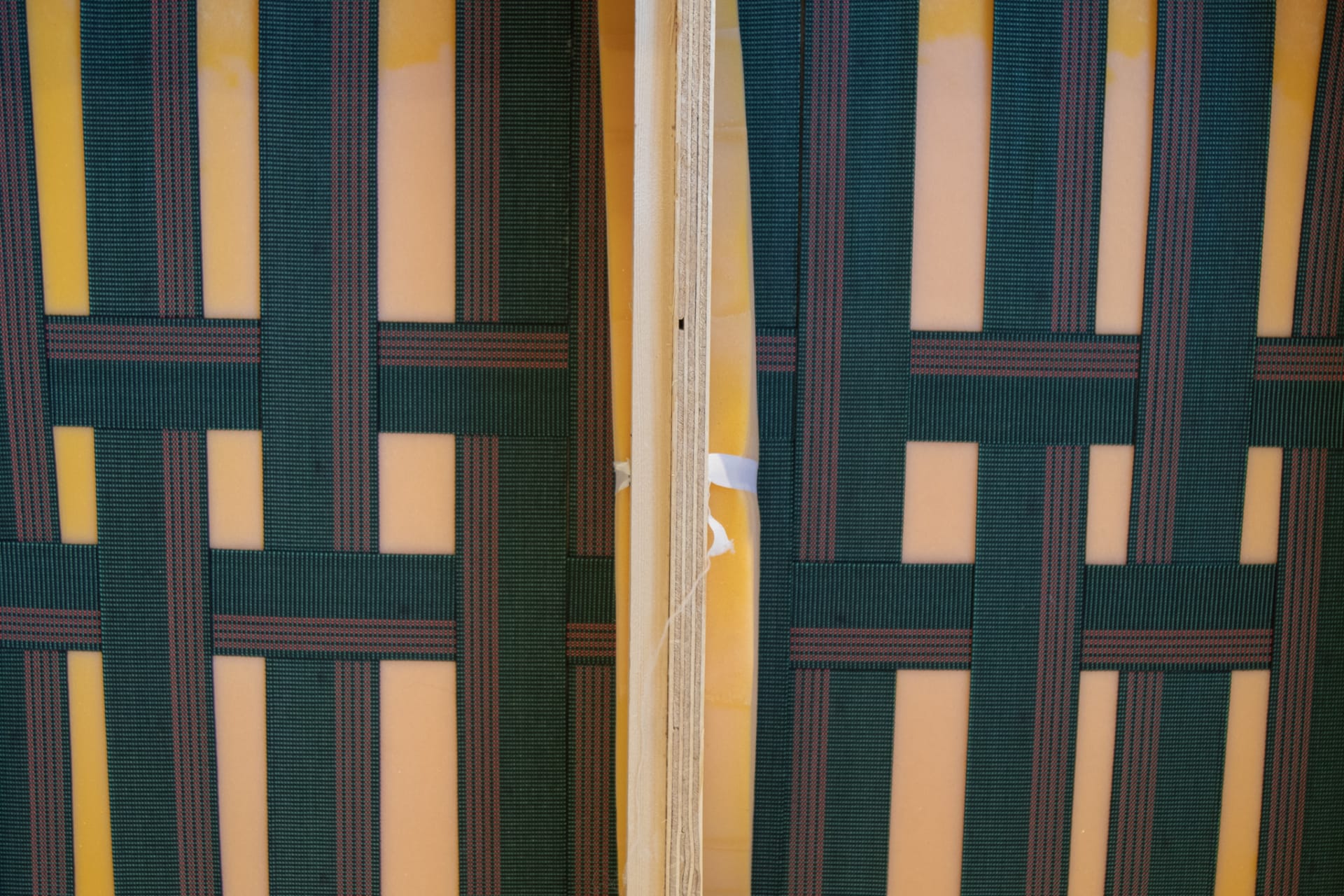
- Sinuous Springs - Sinuous springs are a support system composed of rows of steel wires bent into continuous S-shapes. Sinuous springs strike a balance between affordability and high-quality because they provide resilient support, improve the overall lifespan, and are easy to work with.

- Metal Band Bases - Instead of springs or webbing, some sofas and sectionals employ bands of metal within their seating areas to provide top level support with unparalleled longevity. Metal band bases are considered a premium type of internal support, a well known example being Flexsteel’s patented Blue Steel® Band Base which offers a decades-long lifespan.

Class Dismissed!
Now that you know the basics of sofas and sectionals, you’re ready to start shopping for the right product for you, your home, and your needs. Happy shopping!